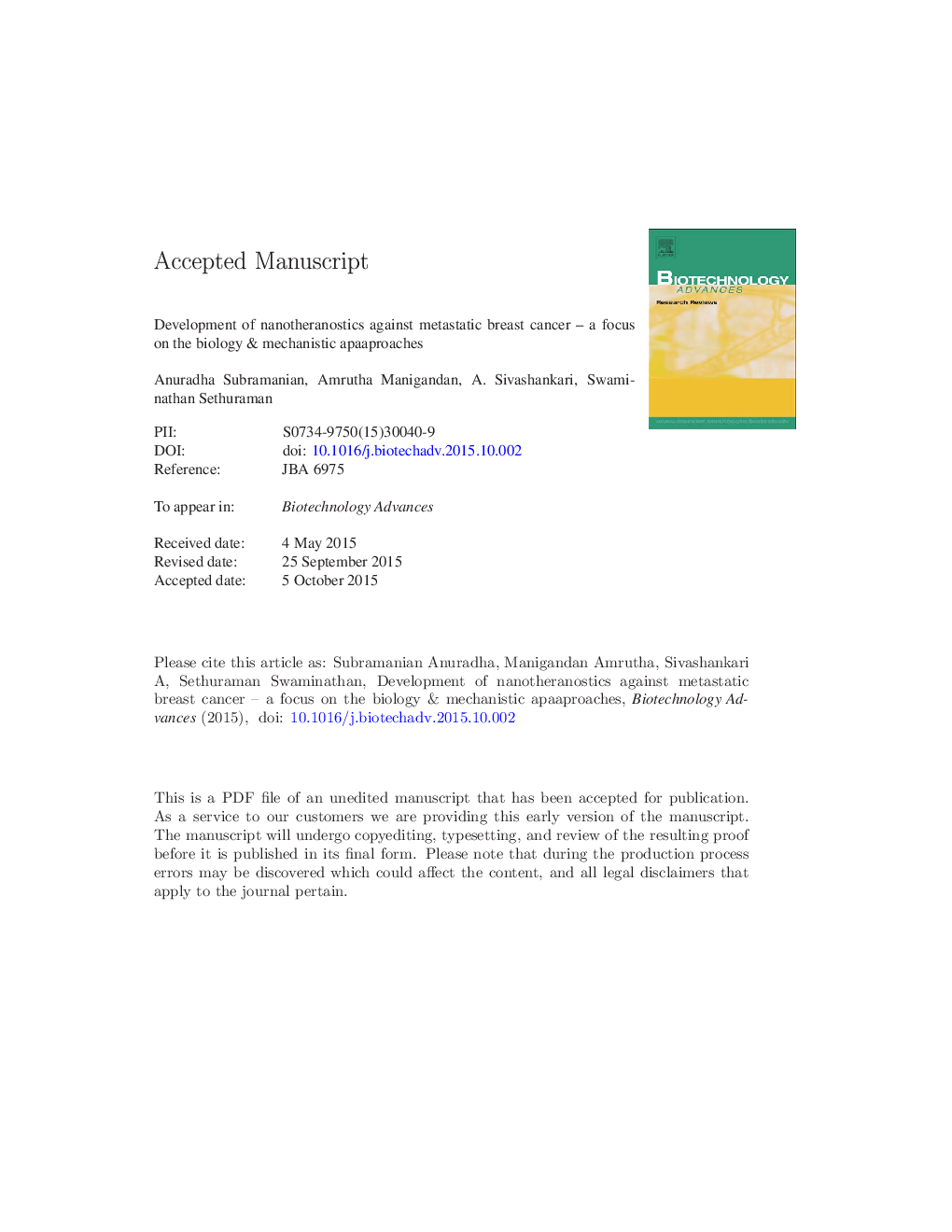| Article ID | Journal | Published Year | Pages | File Type |
|---|---|---|---|---|
| 10231410 | Biotechnology Advances | 2015 | 65 Pages |
Abstract
Treatment for metastatic breast cancer still remains to be a challenge since the currently available diagnostic and treatment strategies fail to detect the micro-metastasis resulting in higher mortality rate. Moreover, the lack of specificity to target circulating tumor cells is also a factor. In addition, currently available imaging modalities to identify the secondaries vary with respect to various metastatic anatomic areas and size of the tumor. The drawbacks associated with the existing clinical management of the metastatic breast cancer demands the requirement of multifunctional nanotheranostics, which could diagnose at macro- and microscopic level, target the solid as well as circulating tumor cells and control further progression with the simultaneous evaluation of treatment response in a single platform. However, without the understanding of the biology as well as preferential homing ability of circulating tumor cells at distant organs, it is quite impossible to address the existing challenges in the present diagnostics and therapeutics against the breast cancer metastasis. Hence this review outlines the severity of the problem, basic biology and organ specificity with the sequential steps for the secondary progression of disease followed by the various mechanistic approaches in diagnosis and therapy at different stages.
Related Topics
Physical Sciences and Engineering
Chemical Engineering
Bioengineering
Authors
Anuradha Subramanian, Amrutha Manigandan, Sivashankari P.R., Swaminathan Sethuraman,
